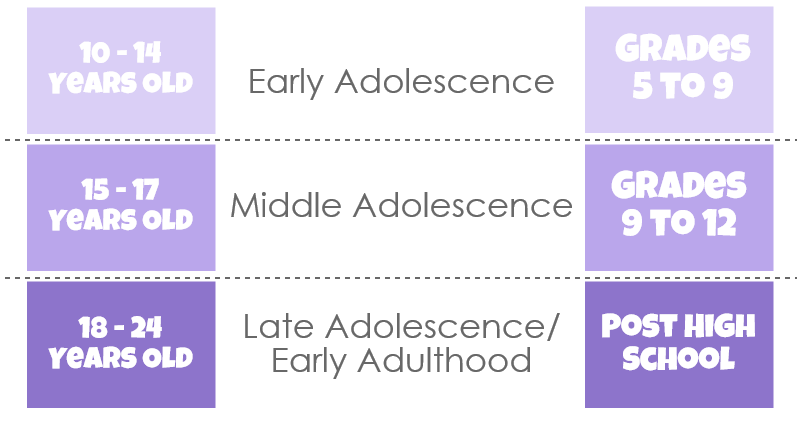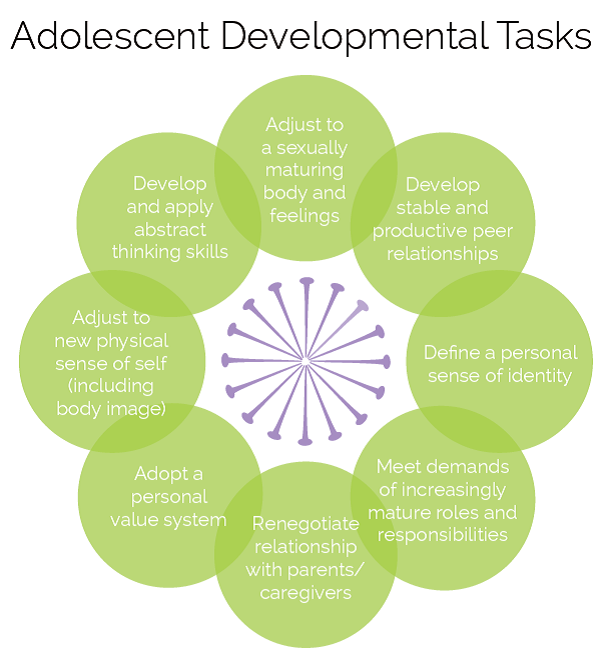Adolescent Health
Background
Adolescence is a crucial period with marked physical, emotional, and intellectual changes, as well as changes in social roles, relationships and expectations. All of these are important for the development of the individual and provide the foundation for adulthood. Establishing healthy behavior is a vital part of this foundation.

Adolescents are not just teenagers. Adolescents and young adults include 10-24 year olds in three developmental stages: early adolescence (10-14 years of age); middle adolescence (15-17 years of age); later adolescence and young adulthood (18-24 years of age).
Improving the health of adolescents and young adults is a priority for Iowa. Lifestyle behaviors developed during adolescence have immediate consequences that often continue into adulthood. These behaviors influence short- and long-term prospects for health, educational attainment, risk of chronic disease, and quality of life. Investment in the health of youth has long-term benefits.
Adolescent Well Visit
When should you go to the doctor? #EveryAgeEvenTeenage.
Teens experience many changes, from physical and emotional changes to social roles and relationship changes. Creating healthy behaviors early on will play an important role into adulthood. How do you know if something is healthy or not? Talking to your doctor is a great start. Call your doctor and schedule (you and) your teen a well visit!

Adolescent Well-Visit Communication Materials
Systems Building
The Bureau of Family Health is committed to focusing their efforts on adolescent health by raising awareness with our internal and external partners. Through infrastructure building we will have the ability to address adolescent health issues both at the local and state levels.
Healthy People 2030
New in Healthy People 2030, adolescents have their own set of goals and objectives set by Healthy People 2030. This website provides an overview of the goals and objectives, as well as intervention information and resources for professionals.
The Patient Protection and Affordable Care Act of 2010: How Does it Help Adolescents and Young Adults
Produced by the Center for Adolescent Health & the Law, this fact sheet discusses the major provisions of Health Care Reform and provides an implementation timeline of requirements that are key to adolescents and young adults.
The Teen Years Explained: A Guide to Healthy Adolescent Development
Programs serving adolescents within the Bureau of Family Health
- Iowa's Sexual Risk Avoidance Education (SRAE) program implements evidence-based curriculum that promotes the positive development of adolescents through curriculum-guided, interactive group discussions; positive adult guidance and support; and community service learning.
- The Healthy and Well Kids in Iowa (Hawki) program provides health insurance coverage for uninsured children of working families.
- Iowa’s Personal Responsibility Education Program (PREP) is an adolescent development initiative that provides comprehensive sexuality education to assist youth in reducing their risk of unintended pregnancy, HIV/AIDS, and other STIs while addressing life skills to prepare youth for a successful adulthood.
- EPSDT Care for Kids focuses on assuring that eligible children ages birth to 20 years receive preventive health care services, including oral health care. EPSDT is the Early Periodic, Screening, Diagnosis and Treatment program for children who are enrolled in Medicaid. EPSDT Care for Kids services are free to adolescents enrolled in Medicaid.
- The Department of Public Health’s Family Planning Program currently contracts with seven agencies that serve 45 of Iowa’s 99 counties. Services in the remaining counties are provided by contractors of the Family Planning Council of Iowa.